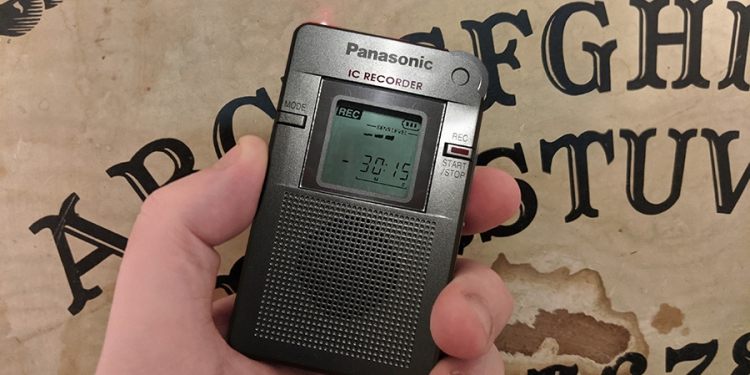

This page is more than five years old and was last updated in December 2020.
Some paranormal investigators call this early Panasonic digital dictaphone "the most effective recorder in the world for capturing EVPs," but there are countless arguments stacked up against its effectiveness.
The recorder has earned its reputation thanks to prominent investigators like Zak Bagans from the ghost hunting show 'Ghost Adventures' and Steve Huff founder of the YouTube channel Huff Paranormal. Despite these endorsements, the DR60 isn't fit for purpose as an EVP recorder.
Before we look at the many issues it has in detail, here's an quick overview:
- Very low sampling rate
- Poor frequency response
- No digital output (USB)
- Non-standard headphone jack
- Voice activation feature introduces noise
- Voice activation feature removes context
- Low volume EVPs are ignored
The Panasonic RR-DR60 IC Recorder was launched in the mid-1990s. It was one of the first digital audio recorders to hit the market, taking over from the classic microcassette dictaphones that were popular at this point.
The initials IC in the device's name stands for Integrated Circuit and refers to its storage medium, a flash memory chip built onto the DR60's integrated circuit. In the case of the DR60, the onboard memory can store up to one hour of audio or 99 individual recordings.
Because the recorder was one of the first of its kind, it lacked a lot of the features that newer digital audio recorders have, most noticeably, it has no USB connector or removable memory card. This meant that the only way to get the audio off of the device was via its headphone jack - an uncommon 2.5mm socket.
The thing that made the DR60 unique at the time was that it had a 'voice activated system' (VAS) feature. When this mode is turned on and the user presses record, the red 'recording' light flashes and the device waits for a sound to be heard. When it does, the red light becomes constant to indicate the unit is now recording.
The official description of VAS reads: "Recording automatically pauses when no sound is detected. This avoids blank portions in recordings. The function works better the lower the microphone sensitivity level. 'REC' lamp flashes when VAS works and recording stops temporarily."
Of course this functionality is useful for those using the dictaphone for the purpose it was originally designed for - making voice memos and notes. It means that you can leave the recorder in front of you and it will only start recording when you start talking. When you stop speaking the recorder pauses again. The volume at which the recorder was triggered depended on the sensitivity of the microphone, which could be set to five different levels.
The reason paranormal investigators liked this recorder was because they could leave it in the voice activated mode and call out to any spirits that might be present, for example the classic ghost hunters' trope "is anybody there?" They could then leave a gap and remain silent before moving on to the next question. When reviewing the audio, the silence between the question would not have been recorded, unless someone or something had made a noise. If a voice was heard answering the question then this was deemed to be an example of electronic voice phenomenon, an EVP.
The VAS feature made the DR60 perfect for quick-fire EVP sessions where the investigator would record for a minute or two and then review the audio before continuing. The lack of pauses in the recording sped this up dramatically and working in this way reduced the needed to go through hours of audio after an investigation. It also meant that if an answer was heard as an EVP, the investigator could question the response further in their next quick-fire burst of questions.
There's a legend on the internet and amongst ghost hunters that Panasonic issued a product recall on the RR-DR60 due to numerous complaints of "unexplained voices" in customers' recordings. It's said that the manufacturer issued an updated version of the product with improved electromagnetic shielding to overcome the problem. Since there are no official statements on the matter available, it's hard to say for sure whether poor internal shielding was at play.
Details about the DR60 are sketchy and have been lost over time. Even the date the model was released is unclear. In our research we've found mentions of people purchasing the device in 1996, but from copies of dated instruction manuals found online, it appears that Panasonic were producing the unit until at least 1998.
There's no documented mention online of any recall, apart from comments on forums and anecdotal hearsay. There's no news reports from the time and no press releases. A list of product recalls between 1998 and 2009, including those issued by Panasonic, doesn't list a recall for the RR-DR60. Furthermore, it's very unlikely that Panasonic would have issued a global recall of a product even if it did suffer from an issue that effected its use. Recalls are expensive and a company will normally only go to these extremes if they discover one of their products might put them at risk of legal action or endanger a customer.
“It is not what the product was designed to do and there is no reason to believe the claims are factual.”
We Contacted Panasonic
When myths are being circulated online, the only way to clear things up is to go to the source, so we contacted Panasonic's customer support team via Facebook.
The message read "many ghost hunters believe that your product, the Panasonic RR-DR60, can be used to capture 'spirit voices' and there's a story circulating that claims that Panasonic recalled the product because of 'unexplained voices', is it possible that you could confirm whether this was the case?"
It took a couple of weeks to get a reply, presumably while the message bounced around the company until it got to the right department. The response came back: "Thanks for reaching out to Panasonic. The response is that it is not what the product was designed to do and there is no reason to believe the claims are factual."
We sent a follow up message just to confirm, "so, there was never an actual product recall?" A response popped up in the chat, "No, it wasn't recalled."
Advertisement ‐ Content Continues Below.
There clearly are some fundamental faults with this audio recorder, but as far as Panasonic are concerned, there is no truth to the recall rumour. It's possible that a very small batch of products were effected, or that Panasonic issued an upgrade to a limited number of customers who noticed a problem. However, it's safe to say that the recorder was discontinued, not recalled.
Despite claims that the Panasonic device is faulty, the recorder is still to this day a very respected tool in many ghost hunters' kitbags. In fact, they are in such demand today that they sell for more than $1,000 on eBay. According to accounts, when they were new they sold for around $20 to $30.
This high price and demand doesn't backup the recall story, it's more likely just due to the scarcity of a dated product which is at least 20 years old.
Although EVPs have been a topic of parapsychological research since the early-1900s, it wasn't until the mid-2000s that there was a revival and a surge of interest in EVPs after ghost hunting shows started using the technique as part of their investigations. It's this relatively new found interest in EVPs combined with the legendary status given to the DR60 that has driven its resell price sky high.
The product's recall isn't the only myth circulating within the paranormal community. Some investigators also claim that the reason the DR60 is so good at capturing EVPs is because it can hear sounds much higher and lower than the human ear can hear. This claim is incorrect, but hard to challenge because the gadget's instruction manual doesn't list its frequency response - this is very unusual for an audio recording device and is probably due to the fact that its range is so poor.
There's been varying results from those who have tested the device, but they generally agree that the higher limit of the DR60's frequency range is about 18kHz, although most state the figure to be 15kHz. The human ear can hear sounds up to around 20kHz, so the RR-DR60 doesn't out perform the human ear for high frequency sounds as claimed.
At the low end of the scale, we can hear sounds from around 40Hz, but it's claimed that the DR60 can record sounds as low as 4Hz, although this seems very unlikely. Sounds below 20Hz are categorised as infrasound and to capture these ultra-low tones a specialist microphone is required, like those manufactured by Bruel & Kjaer. As these microphones will set you back around $500, they wouldn't have ever been included in a $30 dictaphone, especially given their large size.
You have to remember the device's original function - it was a voice recorder. Therefore there was no need for it to capture sounds that the human ear couldn't hear. Even if it did record these sounds, we wouldn't be able to hear them on playback. Some investigators wrongly claim that the DR60 intentionally shifted the pitch of these low frequency sounds into our audible range, but there's no benefit to this for any consumer using the device. It would just add in unnecessary noise from a frequency range that we don't need to hear and a human voice would never fall inside of.
If we're being generous then it's much more likely that the lower cap of the DR60 was around 20Hz, which is pretty standard for any audio recorder. However, this was a first generation digital recorder that used Code-Excited Linear Prediction (CELP), an audio codec that was first proposed in 1985. Based on this, the frequency response of the device could be much closer to that of a telephone call, which is optimised for voice only at around 300 to 3,400Hz.
The Panasonic IC Recorder wasn't just troubled by a poor frequency response, it also had a very poor sample rate. The higher the sample rate, the more crisp and clear the audios sounds, but unfortunately for the DR60, CELP was only able to sample the sound six times per second. To put that into perspective, a compact disc contains music that is sampled 44,100 times per second.
We're now getting to the root of the problem with the Panasonic RR-DR60. When you take into account its poor frequency response and its truly awful sampling rate, you end up with very muffled and poor quality recordings at the best of times - as you'd expect from a 20-year-old recorder. Then when you switch on the voice activation feature things start to get really messy.
The device's instructions say that when using the VAS feature you should adjust the microphone's sensitivity to suit the environment you're recording in. Setting it to one bar if you want to record only loud sounds, up to five bars which is the maximum sensitivity and best for capturing low levels of sound. Most paranormal investigators tend to set their DR60 from the mid-point and up, this is contrary to Panasonic's advice that VAS works better the lower the microphone sensitivity level.
The problem with the VAS function is that it cuts out the silence in between any sounds, leaving just the noisy parts of the recording all bunched up together. This means that what could have started out as tiny but natural sounds spread out across a long recording, ends up as a short but constant sound made up of these noises.
This is made worse by the device's onboard noise reduction and auto-gain functions. These electronic filters automatically remove hiss and low-end rumble, and boost the audio being recorded. Essentially these two functions alter the raw audio coming into the device to make it clearer, but when there's no sounds to be heard it overcompensates resulting in noise artefacts. These unwanted sounds become garbled by the recorder's low sample rate and when bunched together thanks to VAS, become a whole new sound or series of sounds.
Panasonic even stamped a very telling disclaimer across the back of the recorder which states "this device must accept any interference received including interference that may cause undesired operation."
Essentially, the device creates short bursts of noise through poor audio processing, it triggers itself to record, these noises get distorted due to poor audio compression. The silence between the noises are ignored, so the noises become a more sustained sound.
In the diagram below you can see the waveform that represents one minute of recording in a silent room. The peaks seen in the waveform are tiny taps and bangs from the environment that have been amplified to approximate how they might appear as the result of the DR60's auto processing features.

If the DR60 was in VAS mode during the recording, then the flat areas of silence seen above would not be present in the waveform, instead the peaks would be bunched up together. In the waveform below, the silent parts of our original recording have been removed. You'll notice how this version of the same waveform looks more like a sustained sound, perhaps even a word or sentence.

In order to properly analyse your EVP recordings, you'll need to transfer them off of the DR60 and on to a laptop where you can view and enhance the waveform using software like Audacity or Adobe Audition. Unfortunately, there's no easy way to get the audio off of the RR-DR60, the only method is via the device's headphone socket.
You'll need a lead with a 2.5mm jack at one end to plug into the Panasonic and a 3.5mm jack at the other end that can be plugged into a laptop or computer. You'll then need to press play on the DR60 and record the audio on the computer in realtime. This is a destructive process and if high-quality audio connectors aren't used then additional noise and interference may be introduced into the recording.
The only other option is to play the recording back through the DR60's measly 110mW speaker. You can plug headphones or an external speaker in, but again you'll need to convert the smaller-than-usual headphone jack to a normal 3.5mm connection.
Another issue you might encounter when reviewing audio captured by a Panasonic RR-DR60 is that you lose the context of the recording when using VAS mode. This makes it harder to debunk sounds heard in the recording as you'll have no record of at what point in the recording session the noise occurred.
If you do hear an EVP response to your question, it will be heard straight after your question in the recording, in reality the answer might have been seconds or even minutes later - you have no way of knowing. The answer may also have been broken up, said word-by-word or in several chunks as time passed by.
The other problem with the silent parts of the recording being removed is that you'll have lost the chance to enhance the quieter parts of the audio in order to listen for lower volume EVPs, which might have been under the minimum threshold required to cause the device to start recording.
While on a recent ghost hunt, an investigator I was working with caught an eerie laugh on their DR60, because the cackle was isolated we weren't able to explain it. However, we were also running a more modern Olympus VP-10 audio recorder which captured the whole three minutes. When we played back the full session we heard a point where two of the team at the back of the room where whispering to each other. Eventually one of the pair made the other laugh loudly. On the Olympus it was easy to debunk this incident, but the whispering had been too quiet to trigger the Panasonic, which made the laughter much harder to explain.
Even ignoring all of these issues, the Panasonic RR-DR60 still only produces poor quality EVPs that sound garbled, muffled, and are impossible to identify without the investigator introducing their own subjectivity. The voices captured always have the same gravelly tone and are often surrounded by random noise of a similar tone - this unwanted noise is simply ignored by investigators who just pick out the parts that sound like meaningful words or the responses they expect.
The truth is, these devices are sought after because of their tendency to create noise making it easier to capture an EVP, albeit a false one. If you are serious about capturing EVPs then you are much better of buying the best quality digital audio recorder you can buy today. Use it in accordance with the instructions at the highest possible recording rate, and without features like auto-gain and noise reduction switched on.
Experimenting With A Panasonic RR-DR60
I was recently lucky enough to be able to take part in a psychic thought projection experiment using a Panasonic RR-DR60 while on a paranormal investigation at Armley Mills in Leeds.
I was in a group of about 10 investigators, we all took a seat around a large rectangular table on the top floor of the mill. A RR-DR60 was placed in the middle of the table and its voice activated system was turned on. The aim of the experiment was to try to project our thoughts onto the recorder.
We did this by deciding on a word and then focussing on it while recording for 60 seconds. We would then playback the recording to see if the word could be heard. The idea behind this was primarily to address a theory that EVPs are in fact the mental projection of investigators being captured, rather than the voice of a spirit, but for me it was just as much a test of the RR-DR60.
We first agreed upon the word "cabbage" and spent a minute in silence thinking about the word, repeating it over and over in our heads and trying to imprint it in the recording. The DR60 had ignored the silence, so rather than having a recording one minute long, we had a recording of about 10 seconds to review - this meant we had captured something.
When played there was a scratchy, muffled mess of noises. One part of the string of noises was a two syllable sound that was too muffled to make out, but most of the investigators around the table agreed that it said "cabbage", but it could have also been "bingo," "dragon," or just about anything else.
Over the next 15 to 20 minutes we repeated the experiment with different words. We must have conducted the experiment about eight times at this point and not one of the responses had sounded like the word to me if I was being objective.
So, for the next few tests, unbeknown to the rest of the group, I conducted my own experiment. Instead of picking a word and focussing on it, I just sat in silence thinking about anything but the word that had been chosen. Then, just before the audio was played back, I picked a word.
So, while the rest of the group were listening out for the word "history," I was instead listening for anything that might sound like the word "elephant". In the same way the others were hearing the number of syllables required to make their word, I could do the same. If I suspended my objectivity, I could pick out a three-syllable noise that sounded like "elephant".
In this new mindset I was able to achieve the same results three or four more times, despite that fact I hadn't been mentally projecting the word, in fact I hadn't even picked the word during the recording, so there was no reason that my word should be present in the recording.
This proved to me that the garbled noise captured by the DR60's VAS mode is nothing more than random noise artefacts when listened to objectively.
Further Reading
Dive into the world of the paranormal and unexplained with books by Higgypop creator and writer Steve Higgins.

Hidden, Forbidden & Off-Limits
A journey through Britain's underground spaces, from nuclear bunkers to secret wartime sites.
Buy Now
Demystifying The Oracle
A balanced look at Ouija boards, exploring whether they are toys, tools, or dangerous occult devices.
Buy NowMore Like This
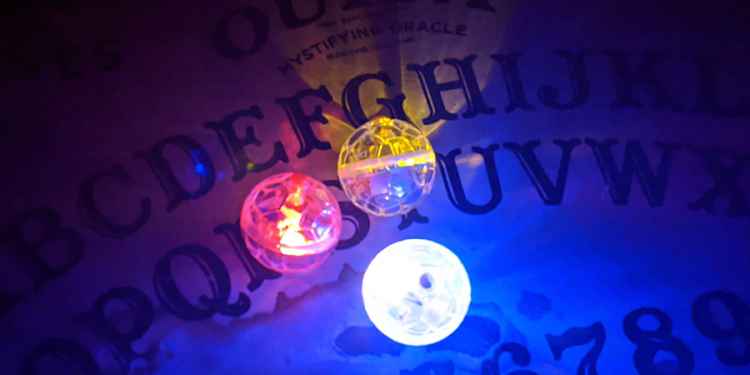
Ghost HuntingJanuary 26, 2025
These Are The Ghost Hunting Gadgets You Should Avoid If You Want To Be Taken Seriously As An Investigator
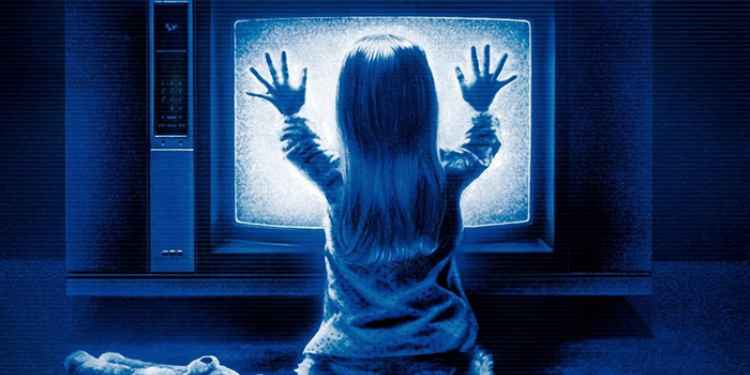
GamesDecember 09, 2024
Poltergeist Quiz
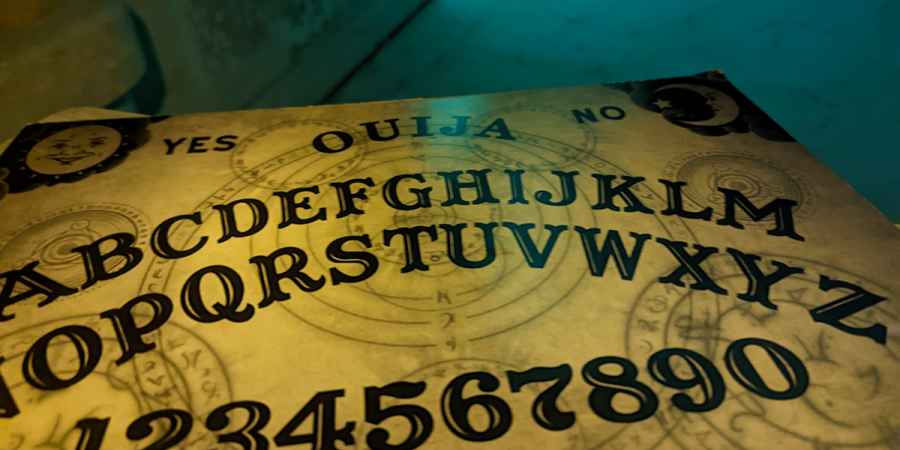
GamesDecember 08, 2024
Ouija Board Trivia Challenge
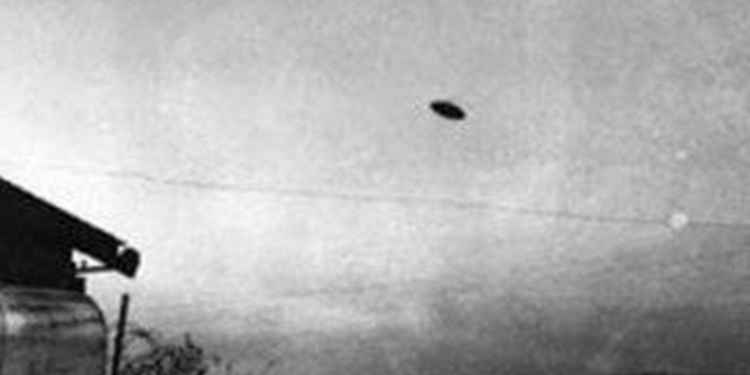
GamesDecember 04, 2024
Fakes, Hoaxes & Debunked Paranormal Claims Quiz
 See More on Audible
See More on Audible
Comments
Want To Join The Conversation?
Sign in or create an account to leave a comment.
Sign In
Create Account
Account Settings
Be the first to comment.